INTEX ATX-300W computer power supply, lumpen ...
Among the cheap and bad power supplies INTEX ATX-300W takes its "honorable" place ... the plain name of the model already says a lot. I don’t know if this company produces good power supplies at all. I doubt it.
+ Click on the picture to enlarge!
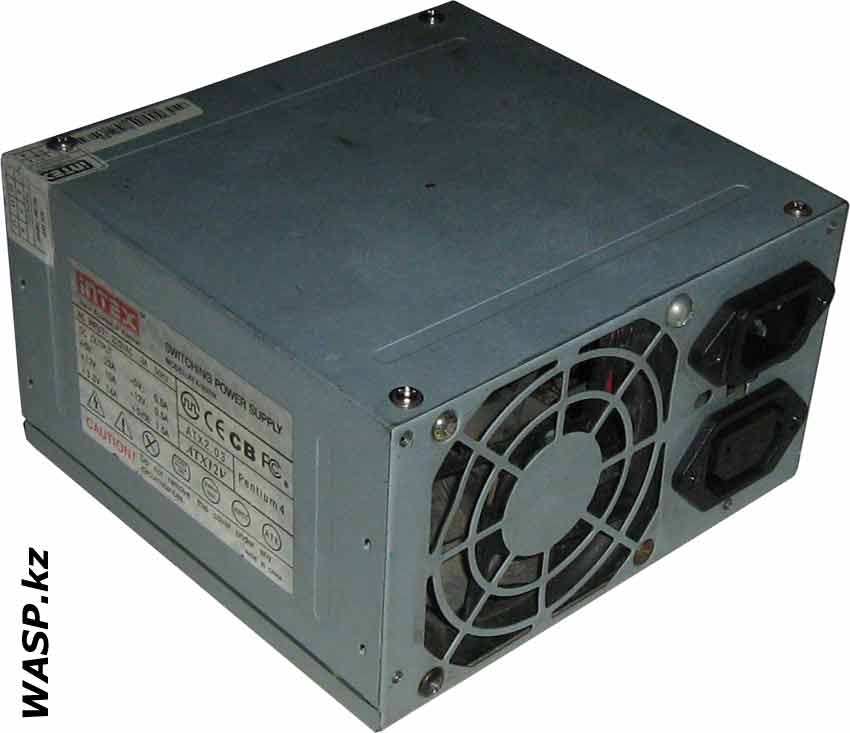
So, the standard size power supply, the old layout: on the back side there is one exhaust 80 mm fan, two connectors side by side. As you can see from the photo - this PSU has already been in trouble, and someone was taking it apart ... the fan was screwed with some motley screws ...
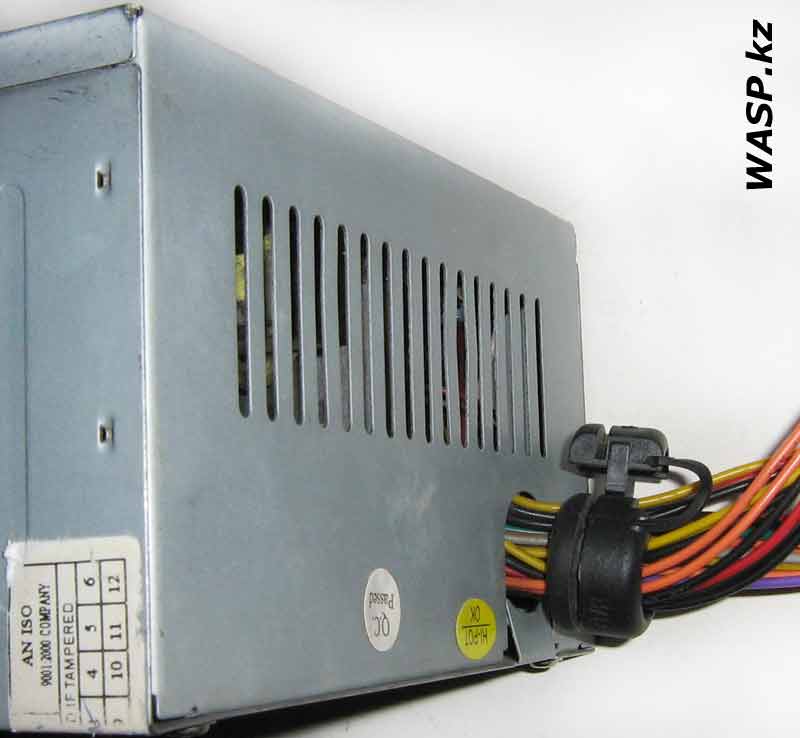
On the opposite side are a row of vertical air vents, two oval stickers: Q.C. Passed and HI-POT OK.
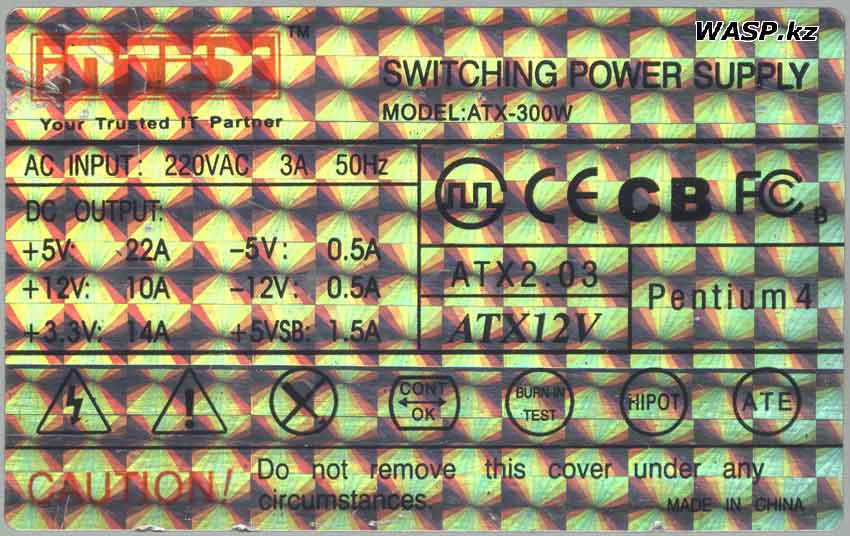
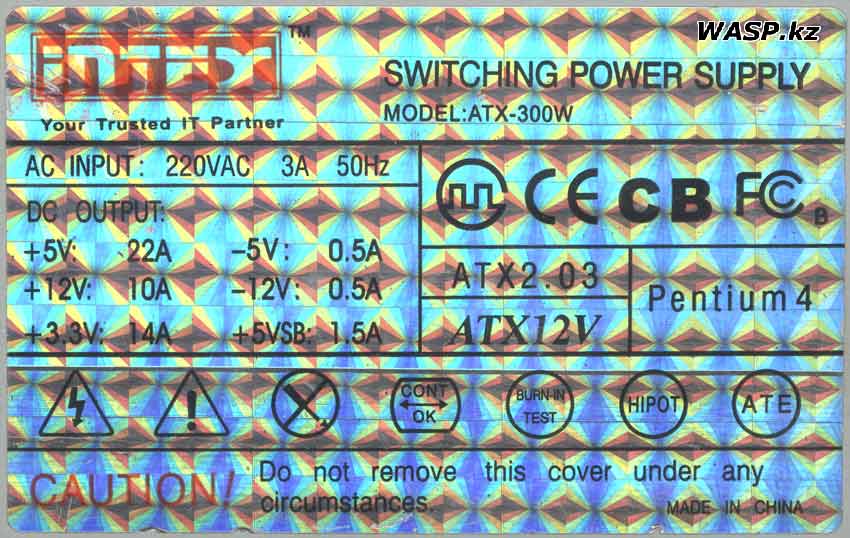
On the side is the label of the power supply, it is all made in the form of a holographic sticker and therefore shimmers with all the colors of the rainbow (therefore I bring two photos taken from different angles). As conceived by the "inventors of Intex," this should attract buyers. On the label we see the INTEX logo, below the slogan Your Trusted IT Partner is your reliable IT partner ... Model name ATX-300W. Then certification, warning icons. ATX2.03 ATX12V standard. Output voltages:
+5V 22A
+12V 10A
+3.3V 14A
-5V 0.5A
-12V 0.5A
+5VSB 1.5A
There is another sticker on the power supply - a warranty one, from the manufacturer, judging by it, this power supply was made at the very beginning of 2004.
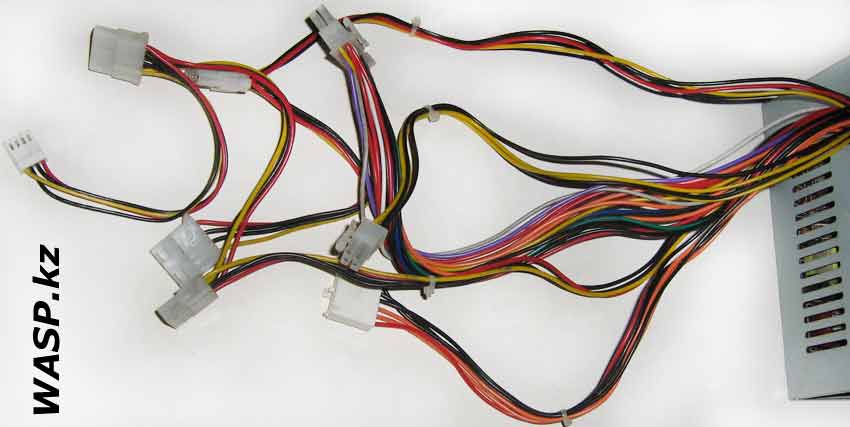
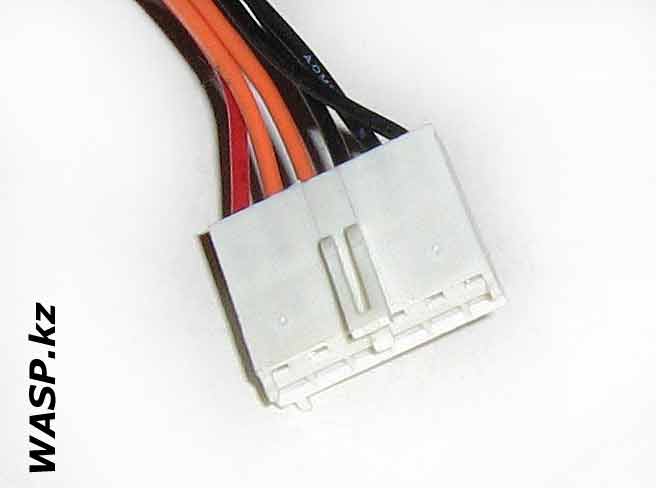
Now consider the output wires and connectors of the INTEX ATX-300W PSU:
20 pin motherboard power supply - 320mm wire length
One 4-pin + 12V processor power - 320 mm
Two 4-pin Molex types - 320 + 160 mm
Two 4-pin Molex + FDD types - 330 + 170 + 150 mm
One 6-pin is 330 mm (sometimes called AUX, one of the two that powered AT standard motherboards).
The thickness of all wires is 20AWG. For a power supply unit of this rank, both the length and thickness of the wires are the norm.
The power supply is very light, weight 865 grams
Remove the top cover of the power supply, note that the case is made of mild steel, 0.5 mm thick.
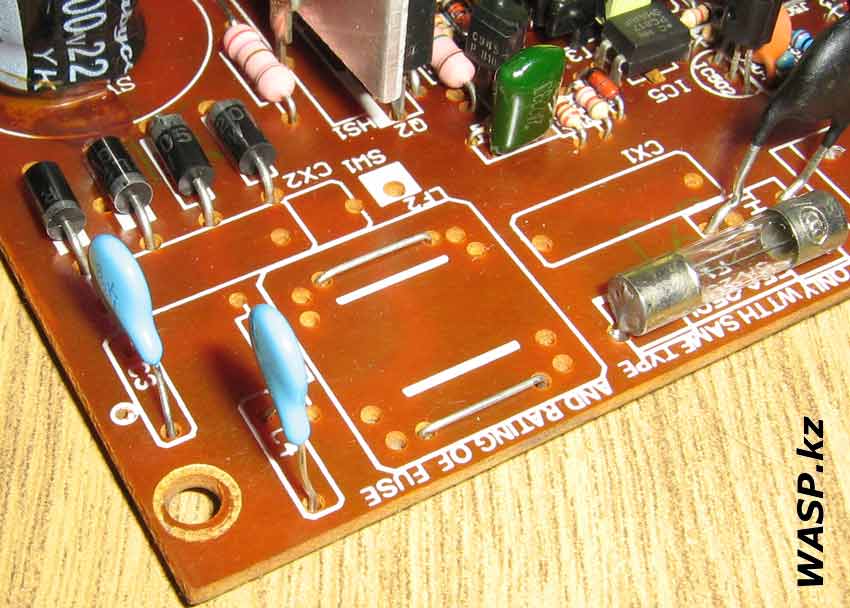
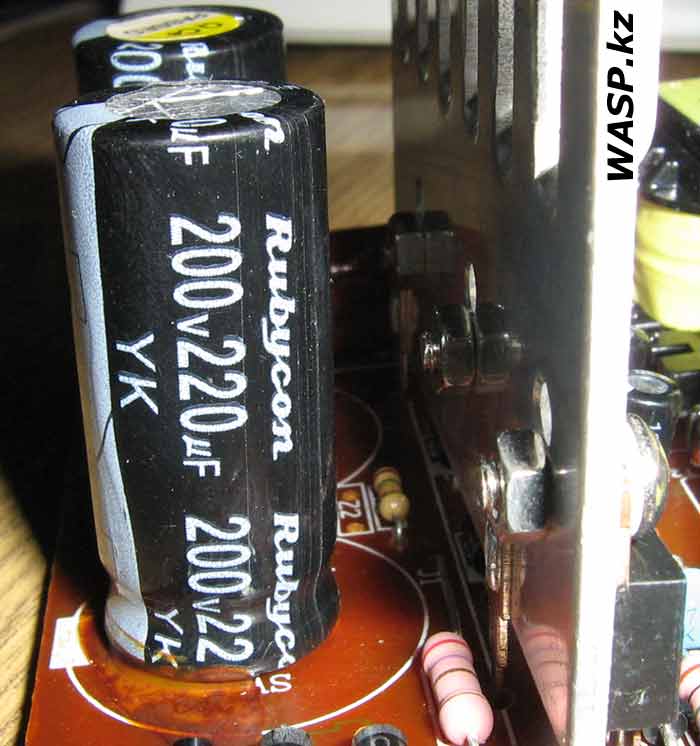
Inside we see a board - brown textolite, everywhere there are signs of savings ... There is no input filter - just jumpers. Diode bridge of four diodes RL205. Two obviously weak electrolytic capacitors at the input of 220 microfarads per 200 volts manufactured by Rubycon, for ambient temperatures up to 105 ° C. The place on the board is divorced for more powerful capacitors.
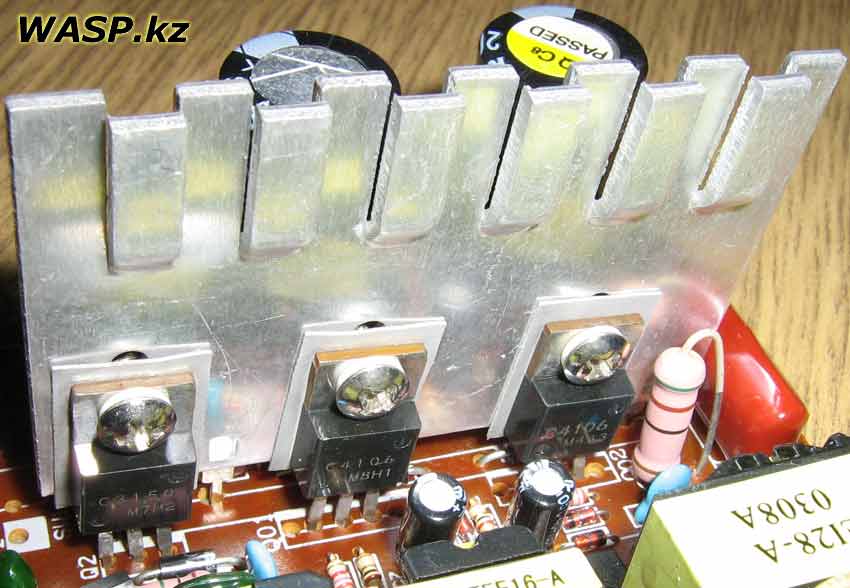
The first radiator: 42x66 mm, 2 mm thick, it has three transistors - two C4106 and one C3150. To the radiator are screwed through gaskets. The screws are equipped with insulators and on the back of the radiator nut. Three transformers marked on them: 01MTEI28-A 0308A, 01MTEE16-A and 01MTEE19-A. Here we also see the marking of the board of the power supply module TM-300A Rev: 2.03.
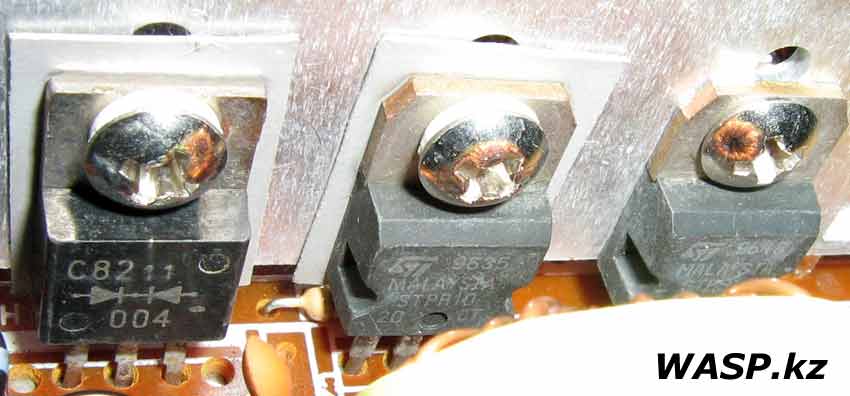
The second radiator is slightly larger: 42x75 mm, thickness 2 mm. It has rectifier diodes: STPS15 45, STPR10 20, C82-004 all Schottky diodes. Also, except for the first one, they are insulated from the radiator by gaskets.
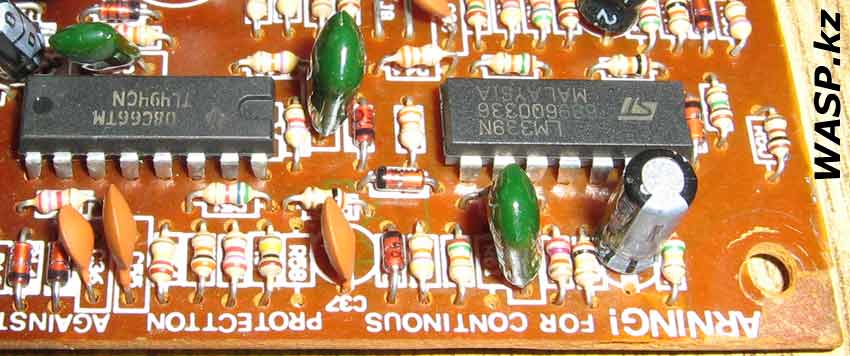
The board is based on a chip known to the TL494CN PWM controller. In his company, the quad comparator LM339N ... a familiar and common picture for such PSUs.
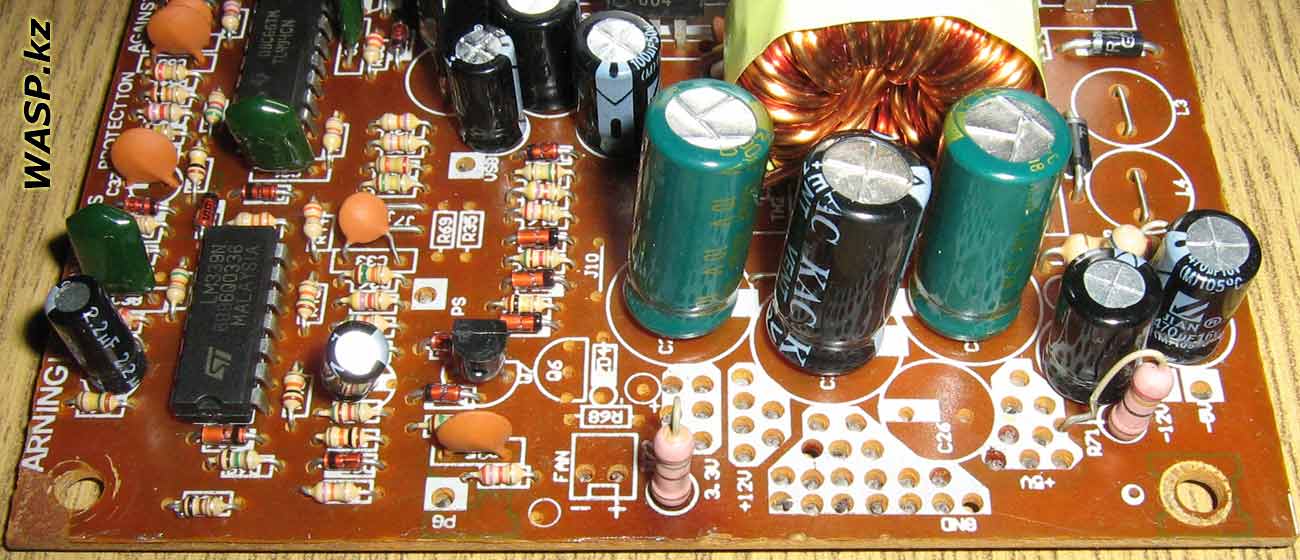
At the output, we see one group stabilization inductor, and one rod inductor. Places for two more chokes are empty, instead of them jumpers. They also saved on the output electrolytic capacitors - they are not all and with capacities of not more than 1500 uF ... The stabilizer TL431, transistors C945, optocoupler PC817 ... are soldered on the board
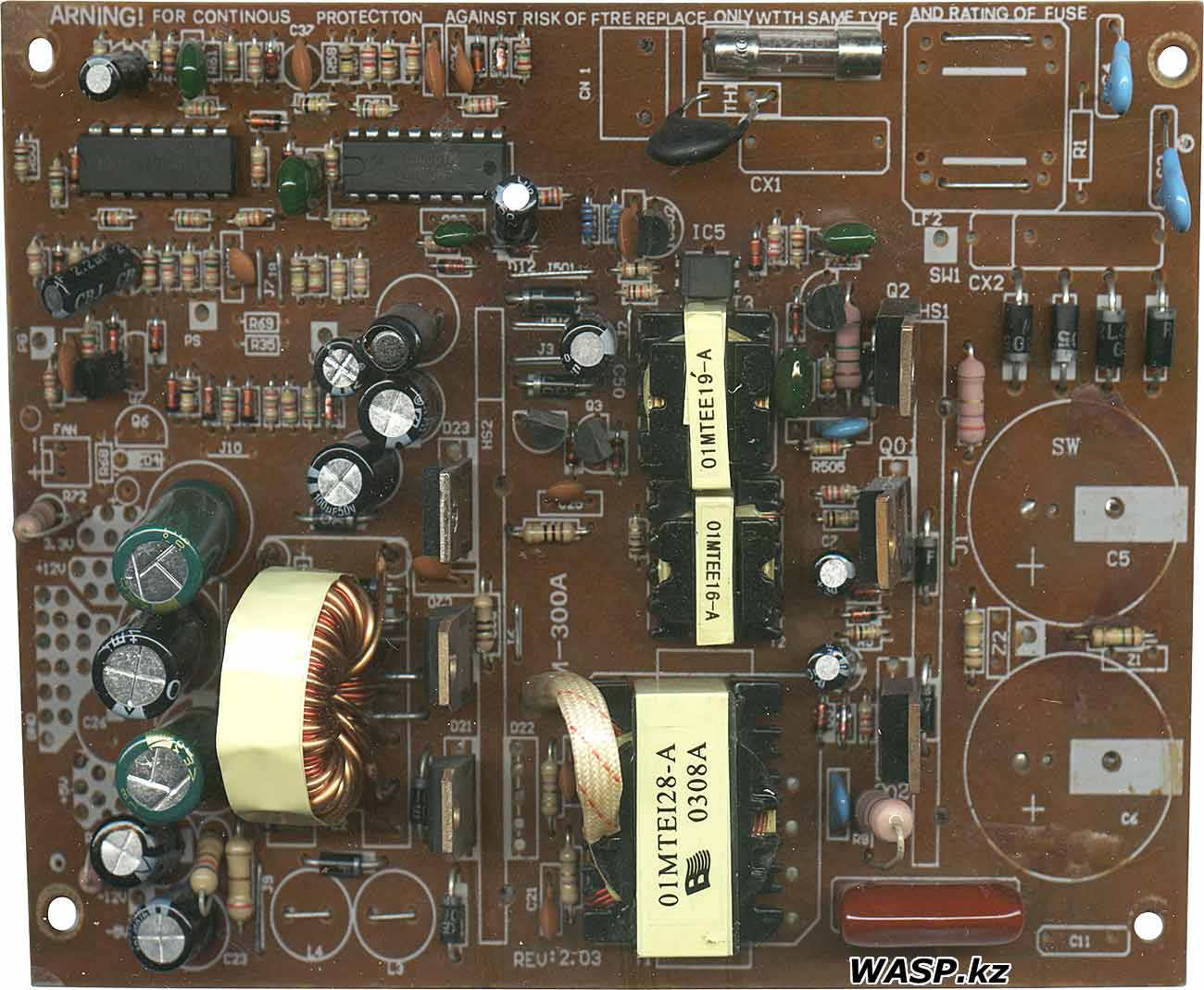
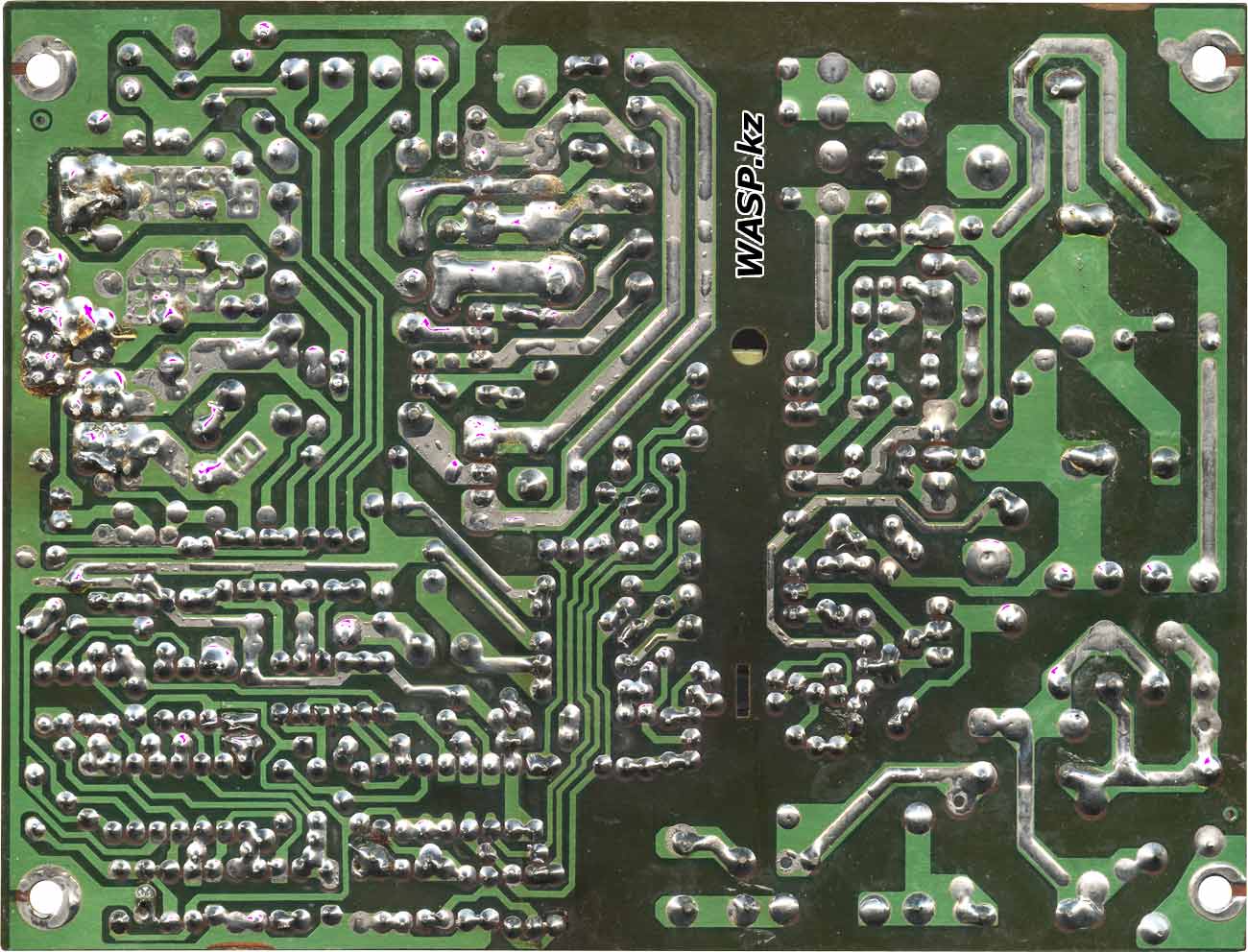
There are only tracks on the reverse side of the board - there are no radio components, just as there are no markings. Soldering is generally normal.
Despite the fact that the power supply was opened, and even clearly unprofessional, nothing inside was touched, except for the fan. He, apparently, was dismantled and greased. And so, the power supply is in working condition, not a single swollen capacitor, not a single "burnt" place. Judging by the amount of dust and dirt inside, he worked for a long time.
Mikhail Dmitrienko, Alma-Ata, 2015 |

